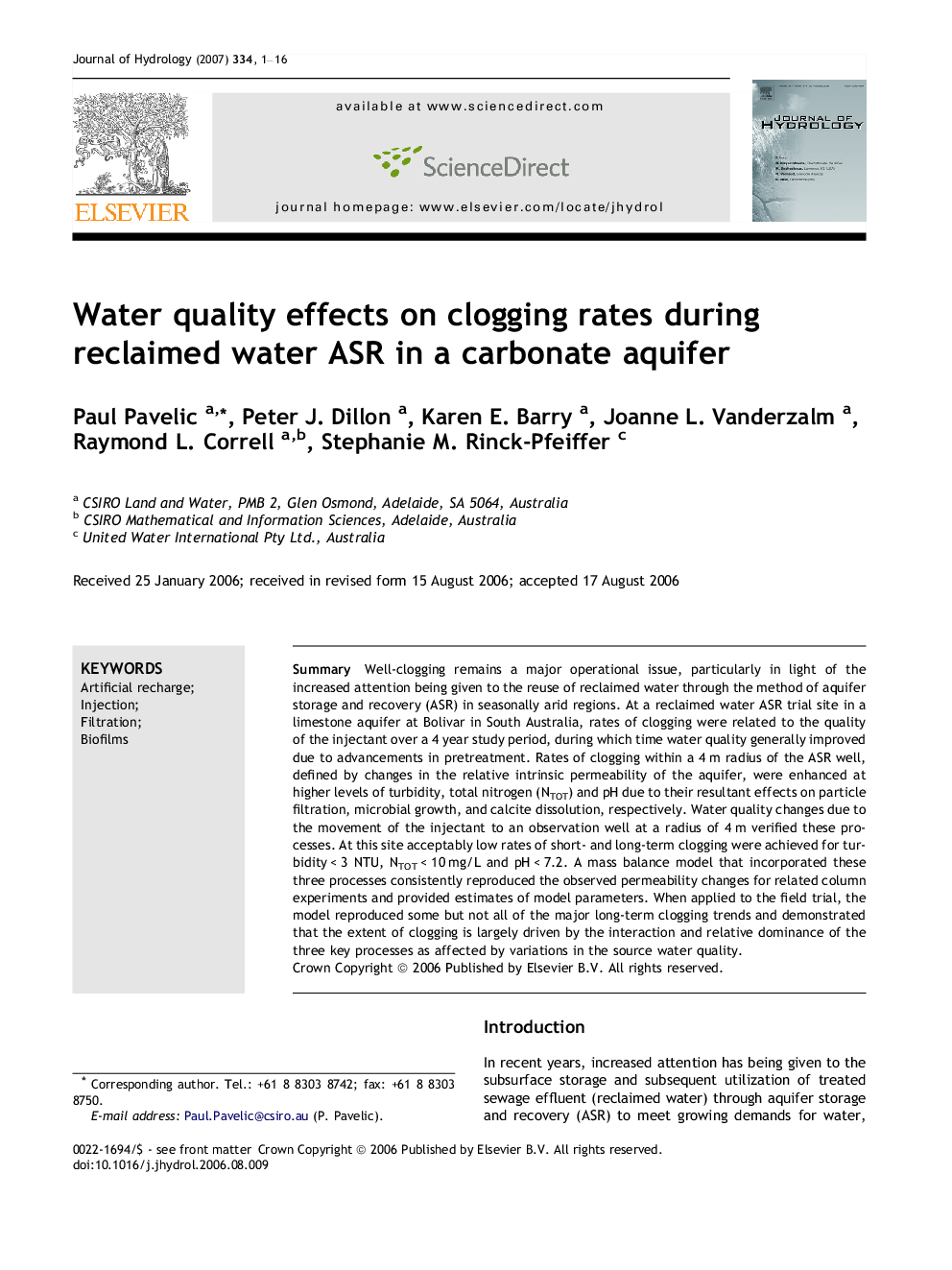| Article ID | Journal | Published Year | Pages | File Type |
|---|---|---|---|---|
| 4579912 | Journal of Hydrology | 2007 | 16 Pages |
SummaryWell-clogging remains a major operational issue, particularly in light of the increased attention being given to the reuse of reclaimed water through the method of aquifer storage and recovery (ASR) in seasonally arid regions. At a reclaimed water ASR trial site in a limestone aquifer at Bolivar in South Australia, rates of clogging were related to the quality of the injectant over a 4 year study period, during which time water quality generally improved due to advancements in pretreatment. Rates of clogging within a 4 m radius of the ASR well, defined by changes in the relative intrinsic permeability of the aquifer, were enhanced at higher levels of turbidity, total nitrogen (NTOT) and pH due to their resultant effects on particle filtration, microbial growth, and calcite dissolution, respectively. Water quality changes due to the movement of the injectant to an observation well at a radius of 4 m verified these processes. At this site acceptably low rates of short- and long-term clogging were achieved for turbidity < 3 NTU, NTOT < 10 mg/L and pH < 7.2. A mass balance model that incorporated these three processes consistently reproduced the observed permeability changes for related column experiments and provided estimates of model parameters. When applied to the field trial, the model reproduced some but not all of the major long-term clogging trends and demonstrated that the extent of clogging is largely driven by the interaction and relative dominance of the three key processes as affected by variations in the source water quality.
